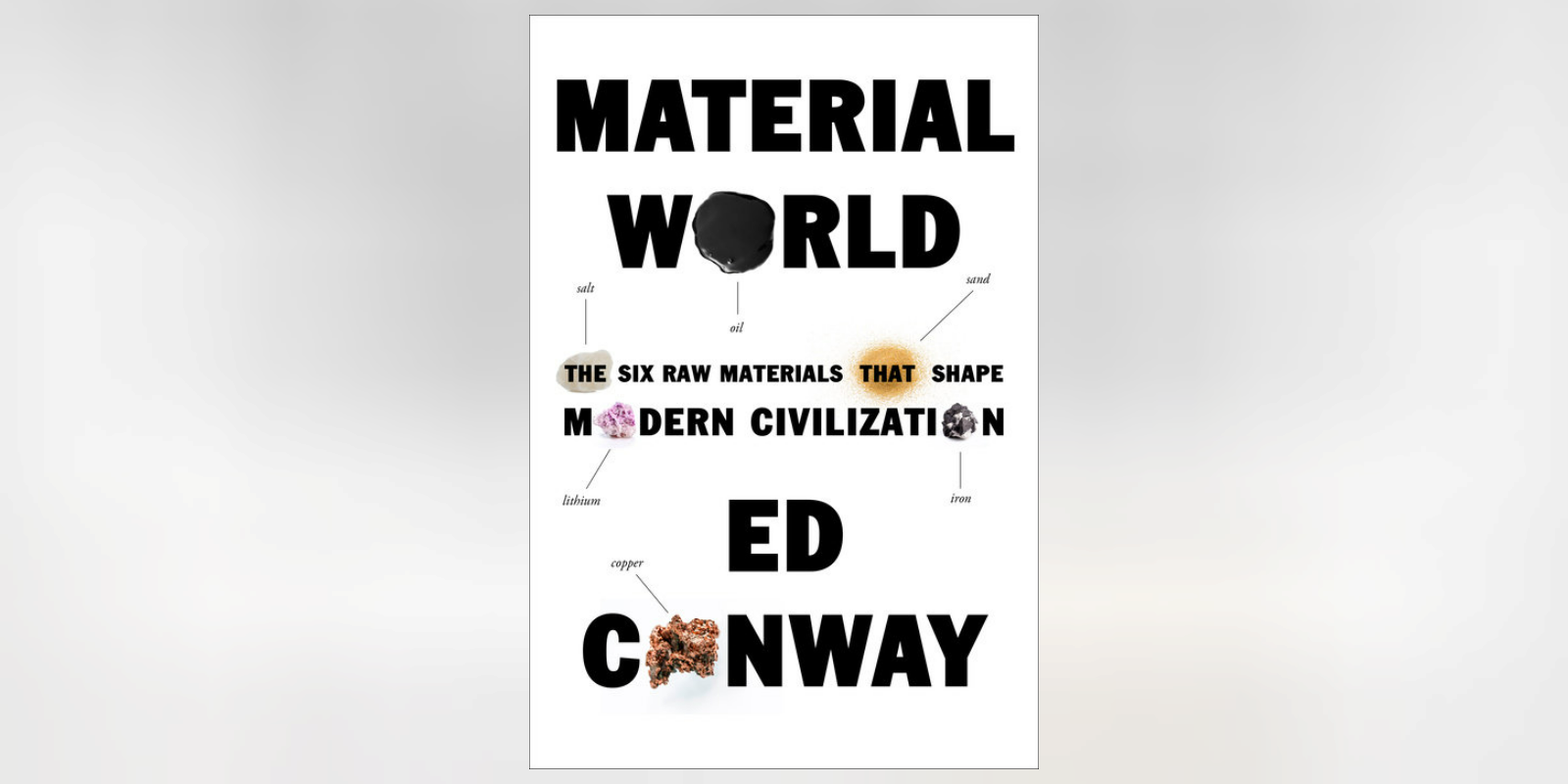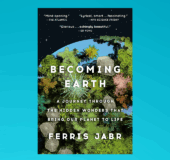Material World is a celebration of the humans and human networks, the miraculous processes and little-known companies, that combine to turn raw materials into things of wonder. This is the story of human civilization from an entirely new perspective: from the ground up.
1
Homo Faber
This story begins with a bang.
An explosion of such magnitude that it would have been audible in two, maybe three continents. Not that there was anyone around to hear it. Because this was roughly 29 million years ago—long before the birth of Homo sapiens—somewhere near the modern-day border between Egypt and Libya.
There in the Great Sand Sea desert a meteor pierced the sky and exploded. The force of the blast was truly cataclysmic, enough to create a fireball and a sound that rattled the sabre-toothed cats and apes who roamed the other side of the Mediterranean.
This meteor strike is less well-known than the one that is thought to have done for the dinosaurs 60 million years earlier. As far as we know it did not cause widespread extinctions. Scientists disagree on whether the meteor exploded mid-air or upon impact with the ground and the search for a plausible crater is still ongoing. But the African meteor nonetheless has a special significance, for it provides the most compelling explanation for a mystery story that has puzzled archaeologists and geologists for a century.
Among the treasures discovered with the sarcophagus of Tutankhamen was a necklace depicting the sun god Ra. It was a stunning piece of jewellery, subtler but no less beguiling than the iconic gold funeral mask of the Egyptian boy king. This pectoral, as it is sometimes called, was encrusted with precious gems and metals: gold, silver, lapis lazuli, turquoise and carnelian. But at its centre was a beetle carved out of a translucent, canary-yellow stone. All the other gems were familiar but at the time of the tomb’s discovery, in the early twentieth century, no one had seen anything like this yellow material before. Why? What was it? And where did it come from? Only when explorers ventured deep into the desert would they begin to find answers.
The Great Sand Sea was so named by Gerhard Rohlfs, a German explorer who in 1873 led an expedition westward into what in Pharaonic times was called the Land of the Dead. A hundred miles after he left the Dakhla Oasis, weeks after setting eyes on any trace of human life, he suddenly encountered an impassable barrier.
“Sand dunes, and sand beyond, truly an ocean of sand,” he wrote. He tried to cross the dunes: impossible, too high, the sand too loose underfoot, even for the camels. He tried to go around them: impossible, for they stretched north and south as far as the eye could see. He marched his team alongside the dunes for weeks, to no avail. Eventually he decided to turn back northwards towards Siwa, the nearest oasis. He and his team wrote a message, put it in a bottle in case they didn’t survive the return journey, and built a cairn of rocks over it. If you travel to the Great Sand Sea and pass by the cairn today it is customary to leave your own message in a bottle.
Rohlfs barely survived the return journey. He would surely have perished, in fact, had it not been for an extraordinary stroke of luck. For while returning across one of the world’s driest regions, where parts can go without rain for decades, the heavens unexpectedly opened and his crew were able to replenish their water supplies. Weeks later this fortunate, emaciated German and his companions reached safety. They brought with them such dismal testimony that no one else bothered attempting the journey for more than 50 years.
Glance at satellite images of this territory and you soon see what he encountered; long, parallel dunes running north to south, separated by flat corridors straight as a Roman road. These perpendicular formations, a product of the prevailing winds, are called seif dunes—after the Arabic word for “sword”—and some run for nearly a hundred miles. There is a uniformity, a kind of symmetry to them. Except that by the time you’ve seen the images they are already out of date.
The dunes are constantly on the move, devouring anything that stands in their way. Herodotus once wrote of a Persian prince who sent an army into this desert. Not long after they entered the Great Sand Sea they were engulfed by a sandstorm and were never seen again. Every so often an archaeologist surfaces with supposed evidence of the lost army.
But surveying these dunes from above fails to convey the feeling of standing at their feet. It is not for nothing that most of the early explorers described these formations as living creatures.
“They grow,” wrote Ralph Bagnold, a Briton who explored the Sahara in the 1930s. “Some . . . can live independently, can keep their shape while moving from place to place, and can even breed.”1
Sometimes the seif dunes collapse over escarpments and form into crescent dunes—barchans, as they are known. Sometimes one seif can mount another, and together they form a whaleback, or mega-barchan.
The way these grains interact with each other, the wind and their surroundings seems mysterious and unpredictable, but actually the physics of sand is just incredibly complex. Having encountered these dunes as he traversed the deserts, Bagnold devoted the rest of his life to trying to understand them.
Anyone who studies sand dunes labours under Bagnold’s long shadow. He became so influential that when NASA was attempting to understand the dunes on Mars it was to Bagnold’s books that they turned. Indeed, if you followed the mission of the Curiosity rover you may recall that it spent two years exploring Mars’s Bagnold Dunes.
Bagnold and a band of fellow explorers were the first people to traverse this desert in the early thirties, finishing the journey Rohlfs had failed to complete half a century earlier. They navigated the seifs in motor vehicles, letting the air out of the tyres of their Model A Fords to drive and surf the loose sand of the dunes. One of Bagnold’s colleagues, an Irishman called Pat Clayton, was crossing the lip of one such dune in December 1932 when he suddenly heard a crunching sound beneath his wheels. He got out to investigate and discovered that the desert was covered in great sheets of yellow glass.
Only in the late 1990s did scientists finally confirm that the canary-yellow beetle at the heart of Tutankhamen’s necklace was carved from the very same material Pat Clayton had crunched over 500 miles away in the Great Sand Sea. The Egyptian boy king was buried in the Valley of the Gods with a precious stone plucked from the Land of the Dead. This luminous stone was not forged like diamonds, sapphires and other such gems over thousands of years of heat and pressure within the earth’s crust. Instead, it was created in the blink of an eye by a falling star. That meteor 29 million years ago had turned the sand into a kind of glass—Libyan desert glass.
There are other forms of glass that occur in nature. Obsidian, a jet-black stone used by our prehistoric ancestors as a tool, is actually a kind of volcanic glass formed by magma as it rapidly cools into stone. There are tektites: glassy pebbles created by meteorites or comets smashing into the earth’s surface, bits of which then fuse into shiny stones. There are fulgurites: gnarly, hollow tubes you sometimes find on a beach or dune after a lightning strike. But what distinguishes the glass Clayton found there in the desert was that it was utterly, almost unbelievably, pure.
The main ingredient in most sands is silica—silicon dioxide or, as it’s sometimes known, quartz. And since glass is, for want of a better phrase, melted sand, silica is also the primary ingredient in glass. But that silica content can vary significantly. The glasses we drink from or have in our window panes typically have about 70 percent silica. The silica content of obsidian and of most tektites is generally between 65 percent and 80 percent. The silica content of Libyan desert glass, on the other hand, is a staggering 98 percent. Not only did this make it the purest naturally occurring glass to have been discovered anywhere, it was purer than anything humankind could create—for the time being at least.2
Sand is the great enigma of the Material World.
There is no shortage of the stuff. Heave your way to the top of those dunes and look out over the Great Sand Sea and all you can see is an unending vista of silicon. Silicon in the grains beneath your feet, silicon in the floors of the corridors that separate the seifs, silicon in the Palaeozoic sandstones of the Gilf Kebir on the horizon. After oxygen, which attaches itself to pretty much everything else, silicon is comfortably the most common element in the earth’s crust.
Given this ubiquity, it’s perhaps unsurprising we’ve found so many different things to do with it. We dig and quarry and blast more sand out of the earth than any other material. Yet the economic enigma of sand is that in certain guises it is very precious, so much so that the European Union deems its purest, most elemental forms a critical raw material.
The earth is made of sand, yet we frequently hear stories of desperate shortages. In some corners of the world there are sand mafias who fight and kill for control of grains of silicon. Under cover of night, renegade crews dig up beaches and riverbeds and smuggle and trade the sand on the black market.
Some sands are prized for their value, some for their beauty, some for the shape of their grains, others for their purity. In Sardinia the authorities have started fining people for removing the iconic white sand from its beaches. At Cleopatra Beach, a bay on an island off the Anatolian coast of Turkey, the unusually white sand is so prized that you must wash it from your feet before leaving, so you do not inadvertently take a single grain away with you. In parts of Asia, river ecosystems are under threat because of excessive dredging as grey-market sand miners attempt to satisfy a seemingly unending appetite for building sand and aggregates. Lives have been ruined and the environment threatened, all in the pursuit of something that appears to be everywhere.
Except that saying it’s everywhere is to miss the point, for there are many different types of sand, each with their own unique characteristics. While most sands are primarily silica, some, especially the beautiful white ones on tropical beaches, are composed mainly of something else: the ground-down remains of seashells and corals. Indeed, if you’re on a pristine beach in the Caribbean or Hawaii, the chances are that your feet are probably sinking into parrotfish excrement: the fish eat the corals, extract the nutrients, and poop the remaining calcium carbonate on to the seabed. For the most part, the whiter and warmer the beach, the more likely it is to have come out of the bottom of a parrotfish.
The question of what sand is made from is of more than passing consequence. Geologists have something called the Udden–Wentworth scale, which dictates that any solid, loose grain of a given size (strictly speaking somewhere between 0.0625mm and 2mm) is a type of sand. Paradoxically, this means that sugar and salt are actually sand. But for our sakes let’s ignore the Udden–Wentworth scale and focus primarily on the 70 percent of sands that are mostly made of silica.
The silica content of sand matters because that ultimately determines what you can do with it. Some sands, including those in the Great Sand Sea, are relatively rich in silica—which is part of the explanation for why Libyan desert glass is so pure. But much of the sand you or I tread on has too little silica and too many impurities to be turned into clear glass or, for that matter, silicon chips. Still: part of what makes sand so enigmatic is that in the wild no two handfuls are alike.
Silicon is a chemical enigma too, metallic yet not quite metal, conductive but only on its own terms. It can be made into a polymer, a plastic. Sand can be gloriously soft to touch but each grain is mightily hard, its astounding strength helping to explain why it is used for the physical foundations of the twenty-first-century world. It is at once the basis of the very oldest and the very newest products humankind has learned how to manufacture. It bookends civilisation.
Sand, you see, is the most ancient and the most modern substance of all. It was our transformation of silicon into beads and cups and jewellery that marked the beginning of the era of Homo faber—man the manufacturer. Yet this same substance can be used to create the smartphones and smart weaponry of the twenty-first century.
Here on the beach and in the desert we have our first protagonist. For a long time, chemists sought the key to alchemy—how to turn lead and other unpromising metals into gold. The quest failed, or at least so says the conventional wisdom. But hang on. Today we routinely turn silicon into products that are quite literally worth their weight in gold. We forge wondrous products from golden sand.
Given we have learned how to transform a cheap, inert substance into something so valuable, perhaps we shouldn’t be shocked that these skills have become so highly prized. When trade wars have erupted, sand has often been at the very centre of them. China’s ability to manufacture its own silicon chips to the same extraordinary levels of intricacy as those being made in Taiwan and South Korea is a frequent concern in Washington these days. Will it develop quantum computers faster and with more success than those in the United States?
Since Beijing has surpassed its rivals in so many other economic fields in recent years, Chinese silicon supremacy might feel inevitable, but at least at the time of writing, we are nowhere near there yet. China may be able to dominate global steel, construction, battery and smartphone manufacturing, and even, more lately, social media, but a world-beating semiconductor industry? Not yet.
Why? In part because the process of turning sand into silicon chips is, as we shall see later in this section, among the most extraordinary feats of engineering. Indeed, many of the techniques employed to create transistors so small they are measured in atoms sound so far-fetched that even someone with an overactive imagination would struggle to envisage them. And it is in part because Western leaders will stop at nothing to prevent China from gaining supremacy in this technology. They are determined to prevent the intellectual property, the tools of twenty-first-century alchemy, from escaping. Still, as contemporary as this all sounds, sand has always been at the heart of cutting-edge technology, long before the era of silicon chips.
Copyright © 2023 by Ed Conway. All rights reserved. No part of this excerpt may be reproduced or reprinted without permission in writing from the publisher.

© Sky News
ED CONWAY is economics and data editor of Sky News and a columnist for the Times (London). He has won numerous awards for his journalism, including most recently the 2018 Wincott Foundation Journalist of the Year Award. He lives in London.






